‘The Newscast’ goes old school with video walls used to simulate hard scenery
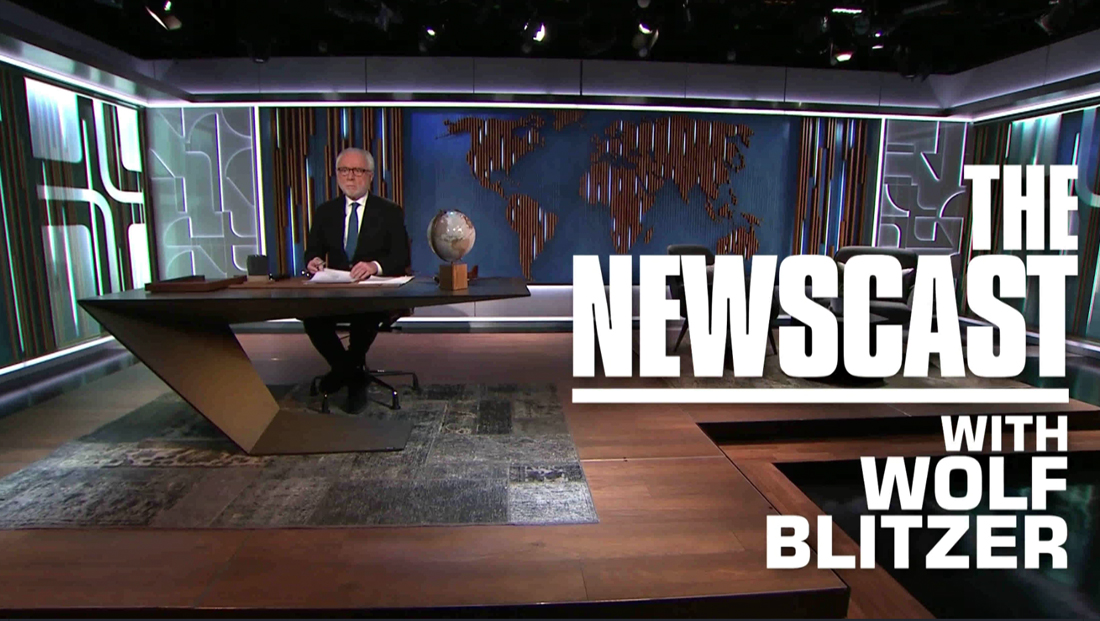
Subscribe to NCS for the latest news, project case studies and product announcements in broadcast technology, creative design and engineering delivered to your inbox.
CNN+’s weeknight newscast helmed by Wolf Blitzer features a unique look with nods to the early days of TV news with what the network calls an “old-school, nostalgic approach.”
Appropriately titled “The Newscast with Wolf Blitzer,” the 7:30 p.m. show is available exclusively on CNN+ and serves as a wide-ranging, traditional newscast designed to summarize the events of the day boasting original reporting, investigations and consumer reporting as well as segments to help put the latest headlines in perspective.
The show originates from Studio B at CNN’s Washington, D.C. bureau, which is next to a larger space known as Studio A. The two spaces can be combined to create one large studio, but can also support simultaneous production of two shows at once.
“The Source with Kasie Hunt” also uses the space, which was previously home, in different configurations, to “The Lead with Jake Tapper” and special coverage on CNN proper.
The studio features upgraded Planar video walls and new geometric dimensional panels with shapes inspired by the CNN+ logo on either side, which also boasts integrated lighting.
For Blitzer’s show, the space is significantly transformed thanks to a combination of dramatic lighting, furnishings and accessories along with video wall graphics meant to convey a sense of hard scenery.
In some ways, these graphics are virtual set extensions, though they don’t actually purport to create the image of any additional space beyond, instead using 3D graphics to make them look less like LED and more like solid walls.
The graphics used here depict a variety of vertical wood slats interspersed with glowing white accents use to create a world map on the space’s largest video wall.
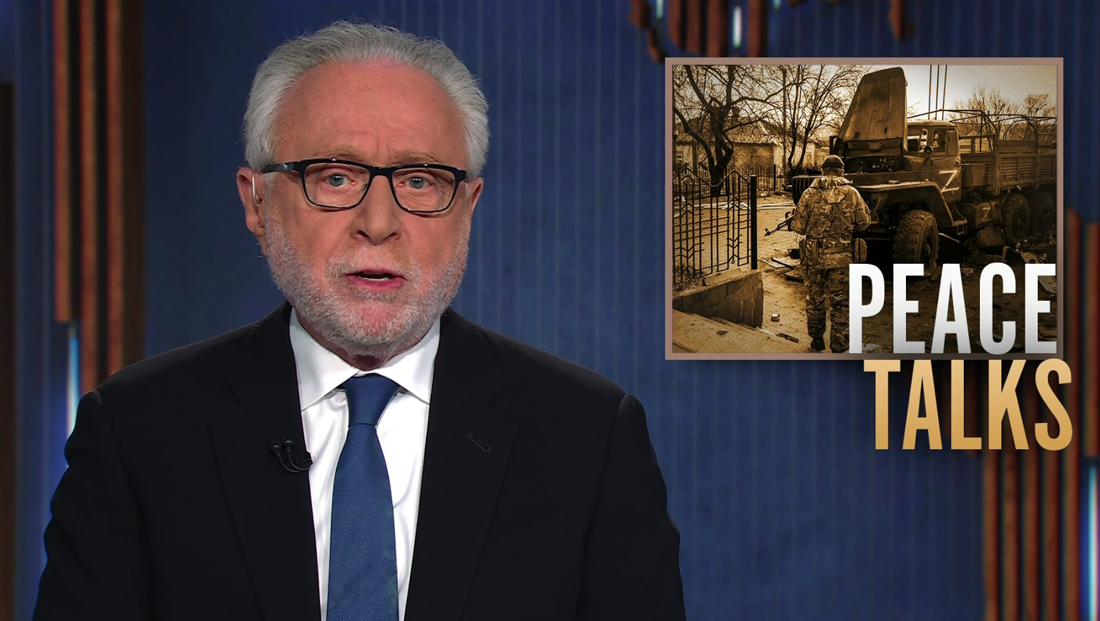
The map, which also features a textured blue background with faint vertical lines, is framed out with additional slats, and a muted version of the pattern is used on the camera left and camera right video walls, which also sport oversized plus sign icons created in the negative space of simulated frost.
Blitzer’s primary one-shot is set up off-center so he’s primarily shown with his body somewhere in the Pacific Ocean between the coast of California and the camera left virtual slat segment.
The broadcast uses more traditional boxed OTS graphics with the imagery receiving a sepia-like filter and large condensed typography from the CNN Sans font family shown in white and tan.
While the box and text float in the upper right corner of the screen without any additional graphical elements, the wood slats forming North and South America blend into the graphic, making those elements appear to be “supporting” them.
In many ways, this approach bucks the trend of using video walls as storytelling elements and showcases how they can also be used to give the same studio space that does use this approach a much different look.
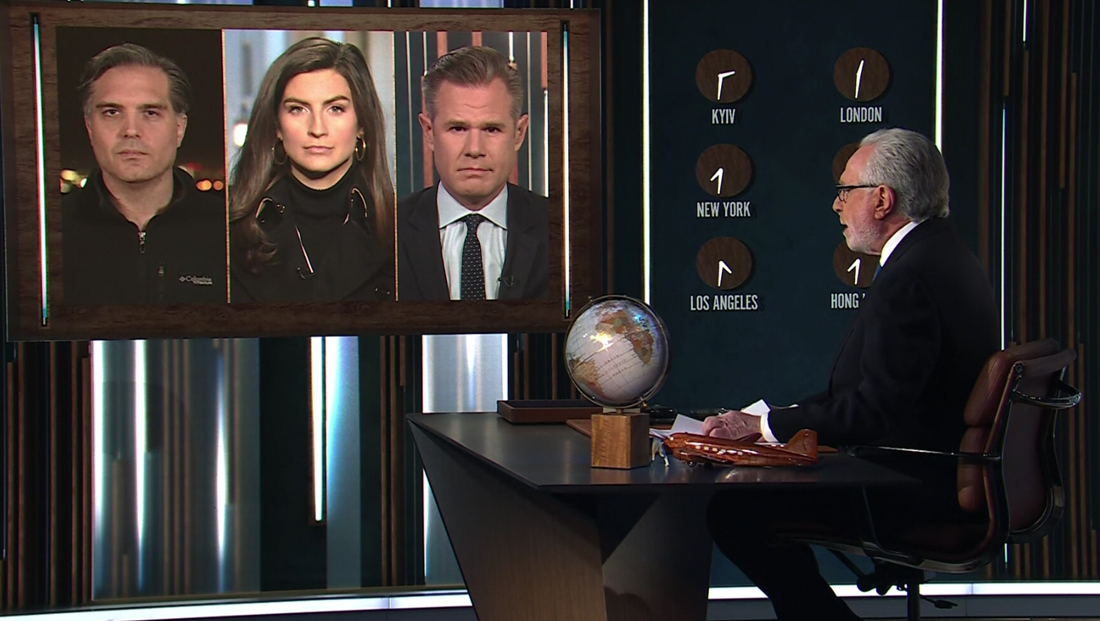
Nearly everything shown on screen here with the exception of the desk, accessories on it and anchor Wolf Blitzer and his chair, is a digital graphic being fed to an LED video wall and not actual scenery.
In addition, the camera left wall can be used as a cross shot for Blitzer to interact with remote guests from his desk, while a simulated wood wall features six clocks showcasing the time in key locations across the world, with the first one set to Kyiv time at launch. These presumably can be changed as needed.
For a desk, Blitzer sits at a dramatically angular L-shaped desk topped with a desk blotter, paper trays, a globe and model plane, and he sits in a brown chair. A blocky gray area rug sits under the desk.
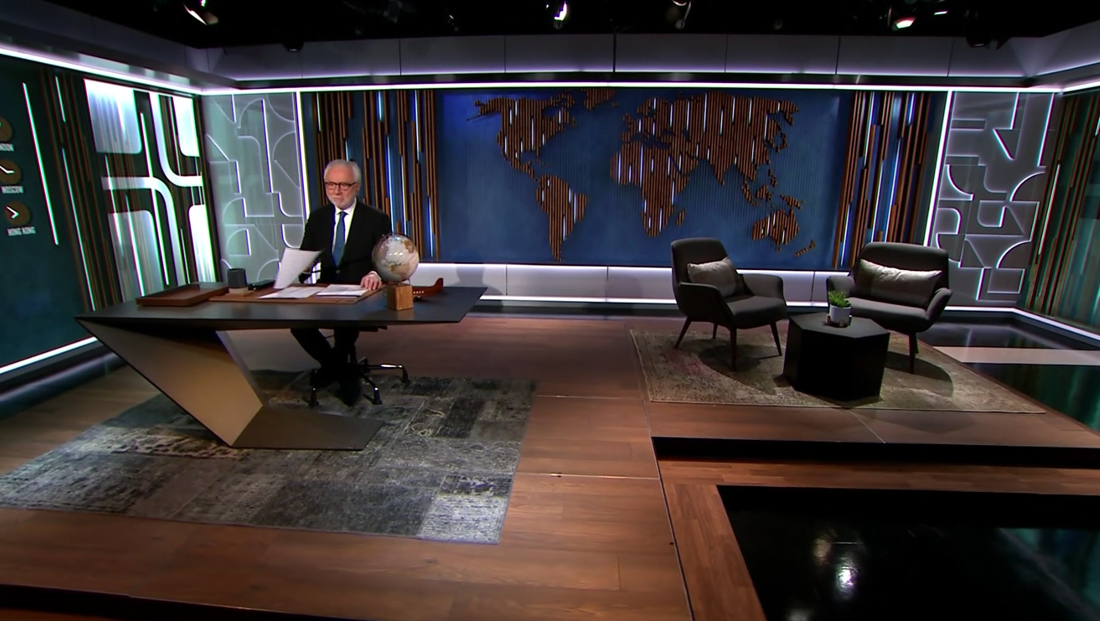
The studio does feature two chairs and a small table that could be used for in-studio interviews on a square area rug. All of these areas sit atop modular wood risers.
Blitzer had several guests who were seated in front of video panels being fed a matching wood slat background and identified as being in Washington, D.C., though it was not immediately clear if they were in a remote home studio or elsewhere in the bureau in one of the network’s mini insert studios.
“The Newscast” logotype is set in what appears to be Compacta, a bold condensed typeface with distinct strokes and features a thick underline element in the opening shot, which features Blitzer at his desk camera left cloaked in darkness as an announcer introduces him and the lights come up.
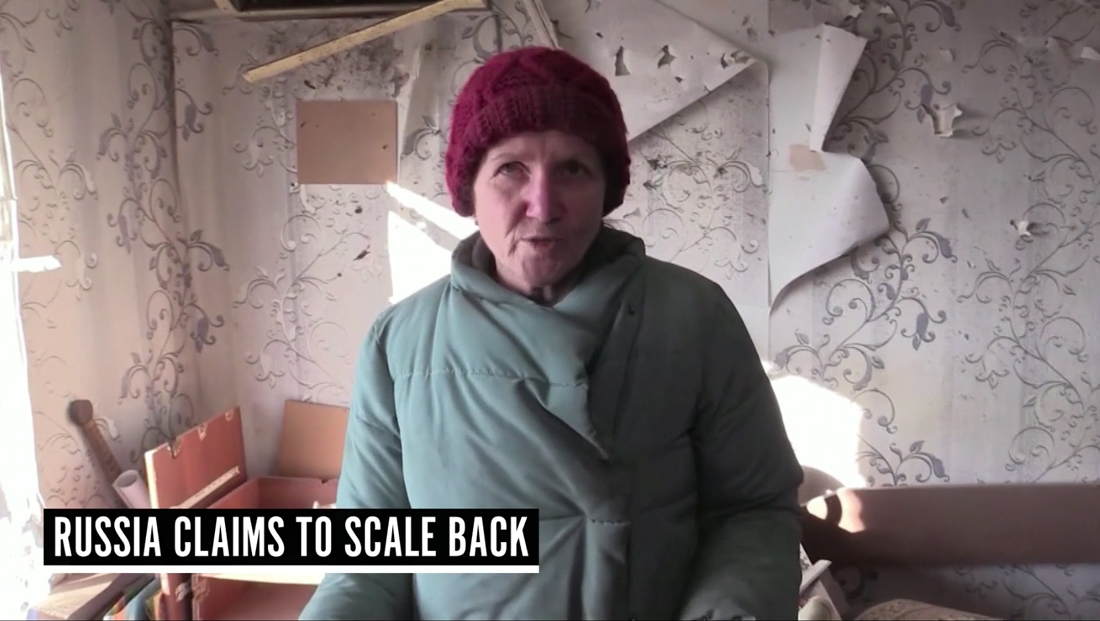
Lower third insert graphics are black and white with text in CNN Sans with a thick white underline below.
Single and double tier designs are available, both of which place the text in white against a solid black background that can be as wide or narrow as needed to fit the text used.
For two tier identifier lower thirds, the second line with the individual’s title is shown in slightly smaller text.
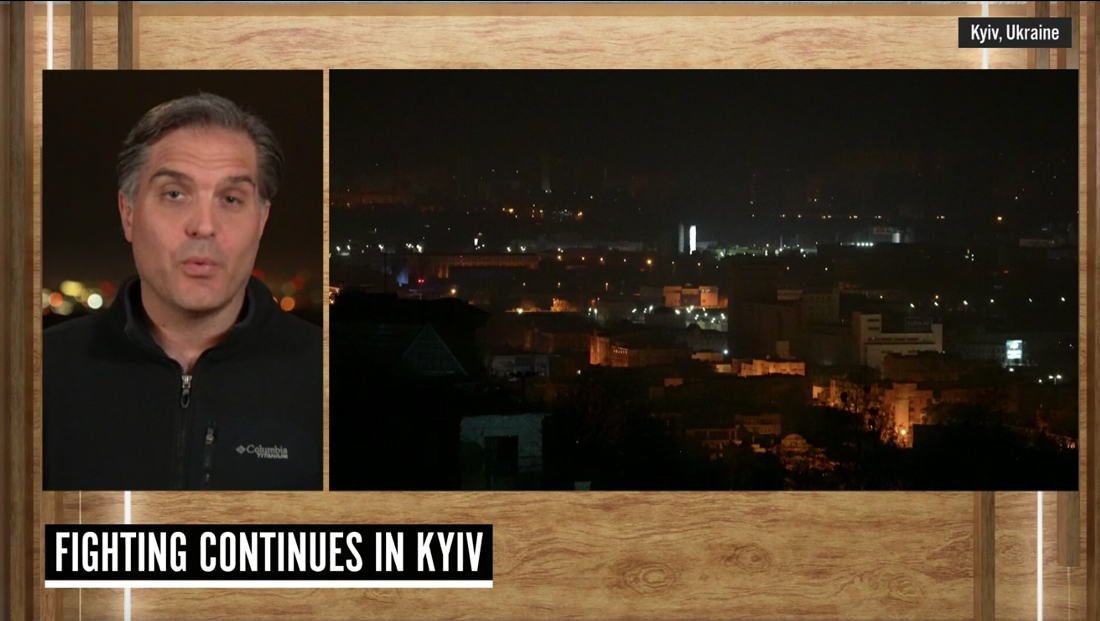
The graphics package also includes a wood toned background when multiple feeds are shown on screen in boxes, with a few of the vertical and lighted slats used on either side.

For fullscreen graphics outlining key points, graphs and charts, the background is more in line with the world map graphic, with a dark blue background with a subtle vertical pattern framed with wood and white vertical elements.
Text is kept legible thanks to a tan box with a black overlay.
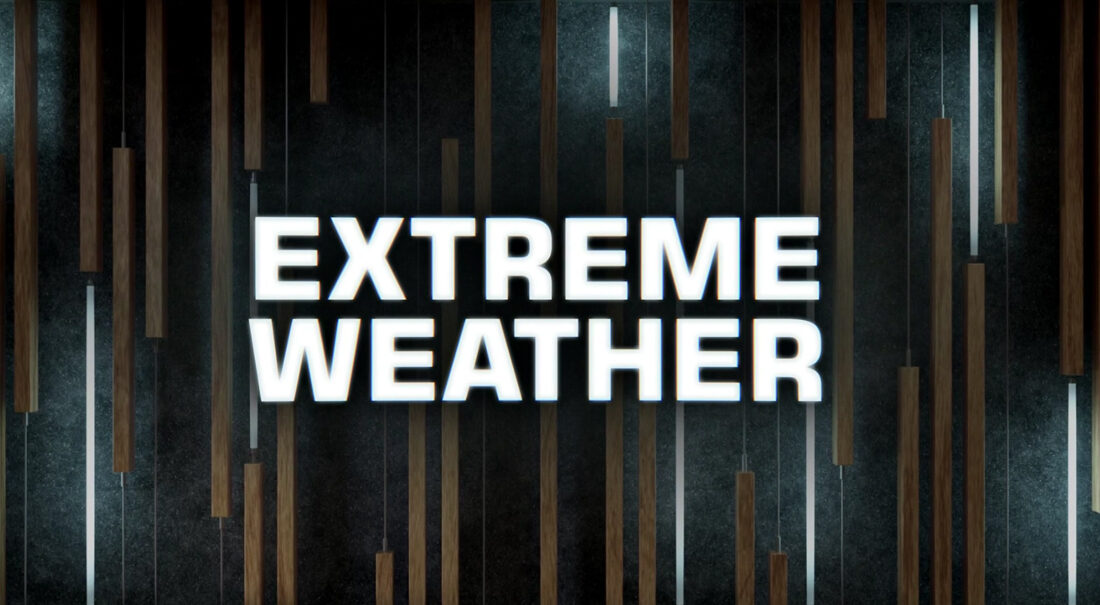
The package also includes fullscreen text based stingers with a slightly darker blue, 3D wood and white pattern behind bold text that can be used to transition from one story to another.

While both wood tones and blue are common in broadcast design, “The Newscast” managed to select sophisticated tones that, when combined, create a sophisticated and elegant look that’s fairly unique.
Subscribe to NCS for the latest news, project case studies and product announcements in broadcast technology, creative design and engineering delivered to your inbox.






tags
CNN, CNN Plus, OTT, Planar, streaming, The Newscast with Wolf Blitzer
categories
Broadcast Design, Broadcast Industry News, Graphics, Heroes, Set Design, Streaming